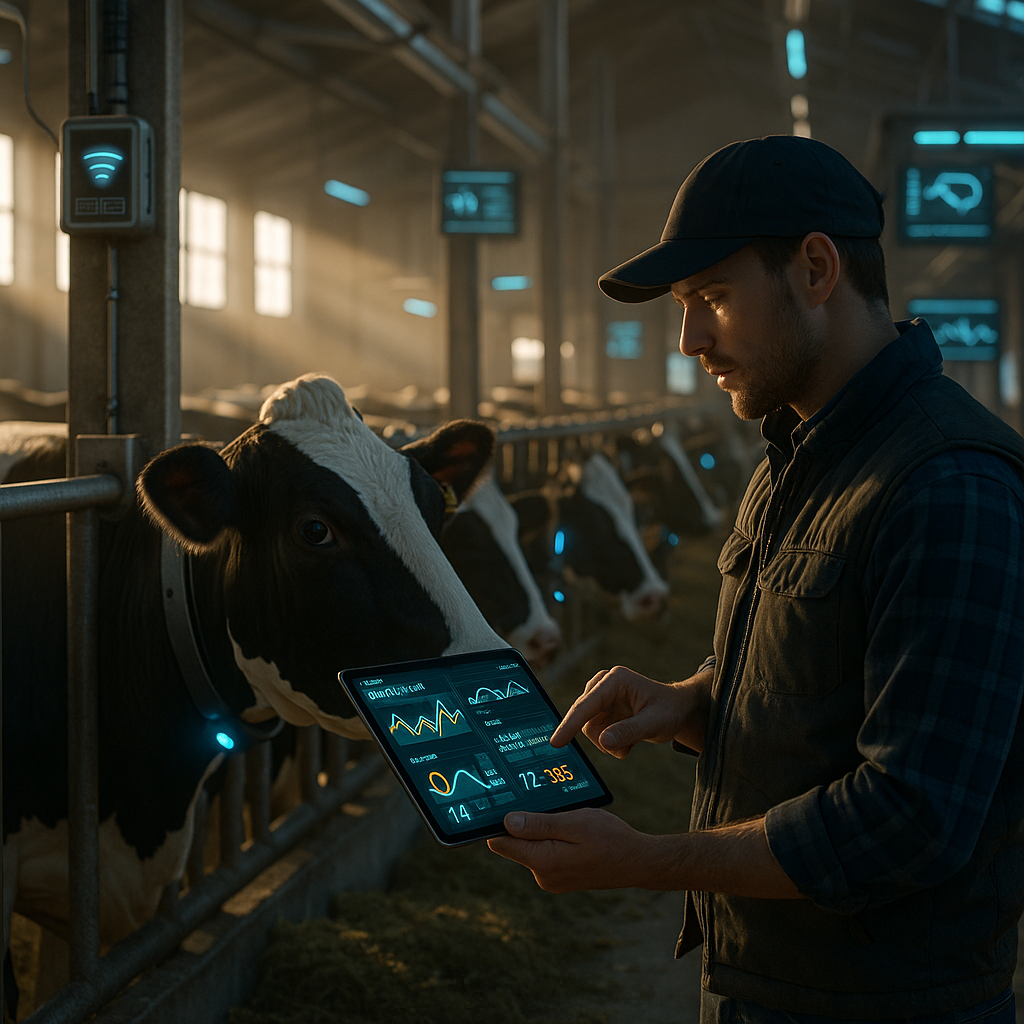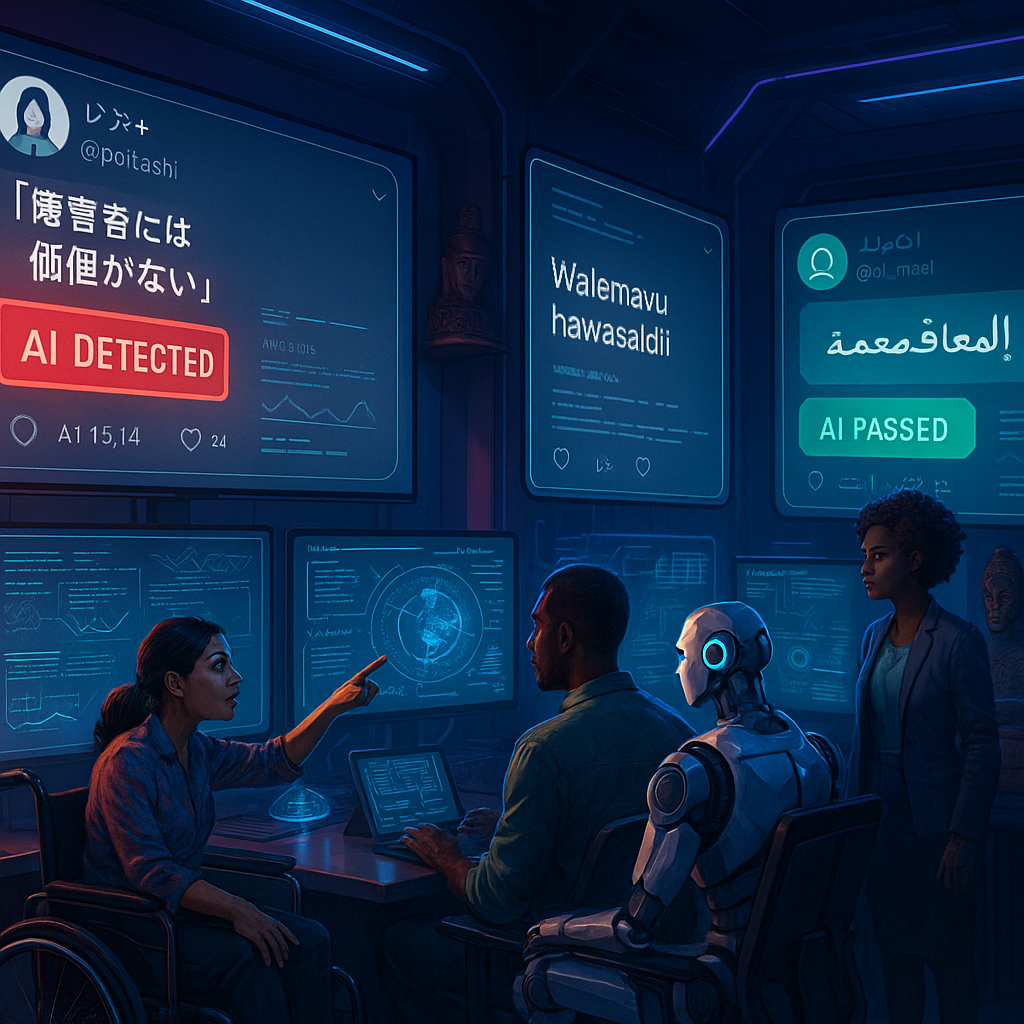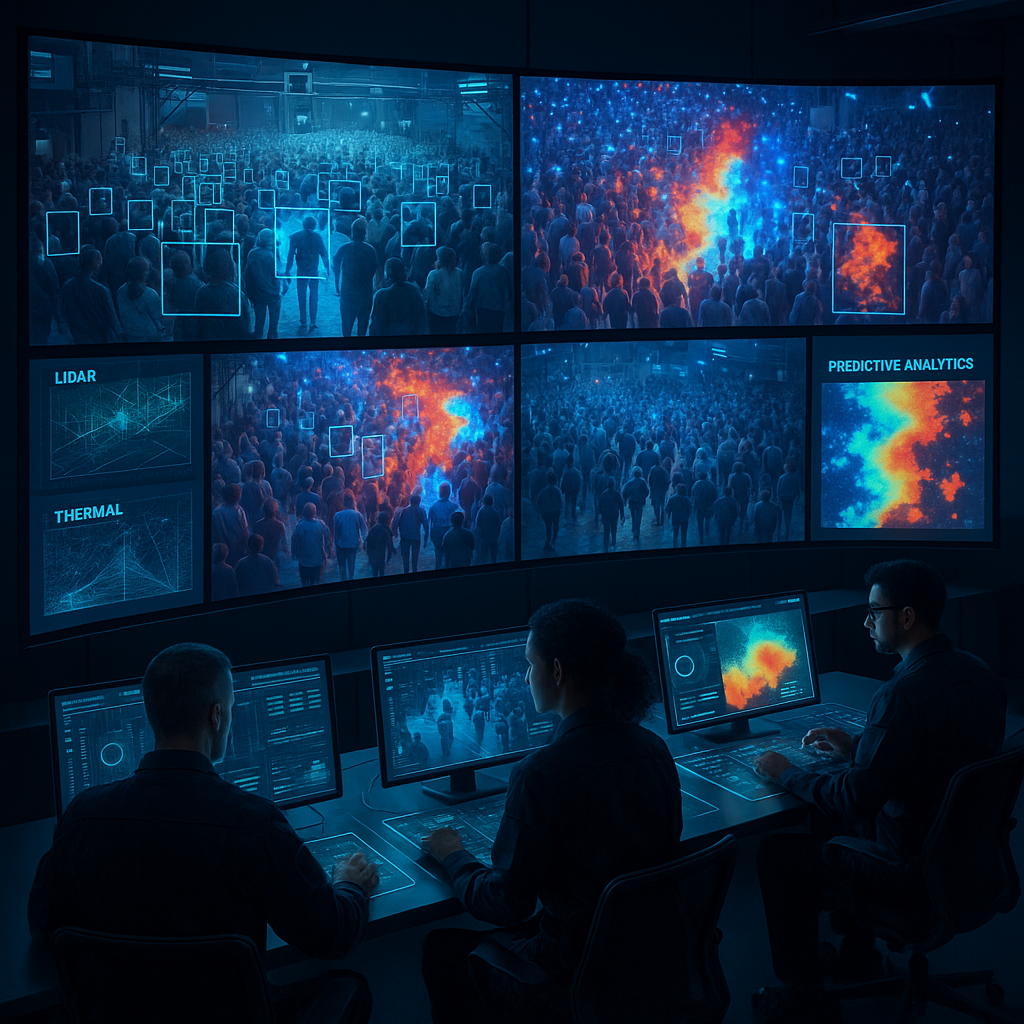Key Takeaways
- Sensor technology and smart farming are quietly reshaping our relationship with animals, redefining what it means to care for living beings in high-tech agricultural environments. These innovations are not merely tools. They invite us to reexamine the nature of ethical stewardship and the nuanced ways we attune to animal well-being amid the rise of digital oversight.
- Real-time eyes and ears for animal health: Sensor technology delivers continuous, nuanced monitoring of animals’ behaviors, vital signs, and environments. This level of oversight unveils health issues or stressors long before they become visible to the human eye, shifting the paradigm from reactive to proactive care.
- Farming with empathy at scale: Smart farming platforms translate complex biological data into actionable insights. These insights empower farmers to tailor care, enhance comfort, and respond swiftly to the needs of each individual animal—moving beyond generic herd management to personalized well-being.
- Beyond compliance; raising the bar for ethical husbandry. Digital solutions transcend traditional welfare checklists, enabling ongoing welfare optimization. Ethical animal care becomes a daily, living practice, rather than a bureaucratic box to tick.
- Data-driven transparency builds public trust: With verifiable, real-time animal welfare metrics, farms can demonstrate an authentic commitment to high standards. This transparency invites greater consumer confidence and elevates accountability across the food supply chain.
- Liberating human attention for deeper connection: By automating routine monitoring tasks, sensor systems free human caretakers to focus on higher-value judgment calls and more meaningful, intuitive relationships with animals.
Smart farming transforms animal welfare from a static obligation into an ongoing, responsive partnership. Technology here does not replace empathy; it amplifies it. In the sections that follow, we will delve deeper into the ways digital tools are rewriting the rules of humane care on the modern farm and beyond.
Introduction
Every twitch of an ear or change in a heartbeat can signal a story—one that often escapes even the most attentive observer on the farm. Today, sensor technology and smart farming convert these subtle signals into meaningful conversations, offering agriculture a new language to understand animal welfare that stretches far beyond long-held traditions.
As digital sensors and analytics unravel the mysteries of animal health in real time, farmers gain the unprecedented power to nurture with empathy at scale. This progression elevates the ethical bar for animal husbandry, shifting the focus from rote compliance to dynamic, insight-driven care. Instead of simply ticking boxes, animal welfare becomes a living partnership, guided by intuition, science, and shared responsibility.
By exploring how these innovations shape our approach to animal care, we invite a broader discussion about stewardship, trust, and the ethical dimensions of technology’s role in modern life.
Stay Sharp. Stay Ahead.
Join our Telegram Channel for exclusive content, real insights,
engage with us and other members and get access to
insider updates, early news and top insights.
 Join the Channel
Join the Channel
The Digital Revolution in Animal Care
With the convergence of smart farming and animal welfare, we enter an era where sensor technology redefines daily operations and philosophical perspectives alike. Modern agricultural environments increasingly resemble sophisticated labs, with digital systems monitoring everything from animal behavior to individualized health. This shift is more than a technical leap forward. It represents a fundamental transformation in our approach to understanding and meeting the needs of animals under our care.
Sensor Technology’s Role in Animal Monitoring
Advanced sensors now stand as vigilant digital guardians of animal well-being, offering continuous observation that human caretakers alone could never match. Core components and their applications include:
- Biometric sensors: Tracking vital signs, body temperature, heart rates, and stress indicators to identify subtle health deviations.
- Movement tracking devices: Analyzing gait patterns to detect early signs of lameness or injury.
- Behavioral monitoring systems: Detecting changes in feeding habits, social interactions, and rest patterns to flag emerging concerns.
- Environmental sensors: Monitoring air quality, humidity, temperature, and lighting to ensure optimal living conditions.
For instance, Dairy Farm Solutions in Wisconsin demonstrated how integrating various sensor systems led to a 45% reduction in respiratory disease incidents among cattle. Early detection not only brought $200,000 in annual treatment savings but also significantly enhanced animal comfort and farm sustainability.
This is not merely automation. It is an expansion of our perceptive powers, bridging the historical divide between human intuition and the silent signals communicated by animals.
The Evolution of Smart Farming Practices
Building on the foundational value of sensors, smart farming technologies are revolutionizing traditional agricultural methods through deeply data-driven processes. Today’s systems allow for:
- Predictive health monitoring: Identifying and addressing issues long before they become crises.
- Automated feeding systems: Delivering nutrition tailored to the unique needs and growth trajectories of each animal.
- Climate control technologies: Dynamically adjusting barn environments in response to real-time sensor input.
- Integrated management platforms: Merging data from diverse streams (health, environment, productivity) for holistic, responsive care.
This movement away from uniform treatment toward individualized care has parallels in other sectors as well. In healthcare, biosensor-equipped wearables empower physicians to monitor patients remotely and respond preemptively to health changes. In education, adaptive learning platforms track individual progress, allowing customization of educational content to suit each student’s needs.
How AI Ethology Is Revolutionizing Animal Communication & Welfare further explores how artificial intelligence paired with sensors is transforming the way farmers understand and respond to animal needs, improving welfare outcomes across large-scale agricultural systems.
Digital Empathy and Animal Understanding
As humans, we yearn to bridge the communication gap that separates us from animals. Digital empathy emerges from technology’s ability to serve as a translator and amplifier of animal needs and moods. Through sensor-driven insights, farmers and caretakers gain a heightened, almost preternatural awareness of what each animal is experiencing.
Key aspects include:
- Real-time behavioral analysis: Pinpointing distress, discomfort, or illness through minute changes in activity or demeanor.
- Pattern recognition: Identifying unique preferences or recurring issues in individual animals or groups.
- Automated, compassionate responses: Reducing pain or stress promptly, adapting environments, or delivering targeted interventions.
- Data-fueled insights into social interactions: Understanding herd hierarchies, bonding, and sources of tension.
The result is not merely optimization. It is a new kind of attentiveness, one that enriches human-animal relationships through actionable understanding. This same ethos is emerging in fields like healthcare (remote mental health diagnostics), finance (detecting subtle signs of fraud for better consumer protection), and retail (monitoring shopping patterns to refine customer experience).
Can Artificial Intelligence Develop Moral Awareness or a Conscience? discusses the ethical dimensions of digital surveillance and animal care, extending the conversation to the moral boundaries of technology’s involvement in sensitive, sentient life.
Ethical Considerations in Technological Integration
However, as machinery and algorithms take on greater roles, critical questions surface about the ethics of constant surveillance and automation in animal care. The delicate balance between efficiency and empathy warrants careful thought.
Privacy and Surveillance
- How extensively should animals’ lives be monitored? Does continuous surveillance compromise their ability to exhibit natural behaviors?
- Who owns and safeguards the vast data sets generated, especially when farms partner with technology vendors?
- How can we protect farm operators’ privacy while keeping necessary oversight?
Automation vs. Human Touch
- Can technology ever replace the intuition and connection that comes from daily human-animal interaction?
- How do we ensure that caretaker skills and emotional bonds do not atrophy in overly automated contexts?
- What accountability structures are needed so technology supports, rather than dictates, ethical animal care decisions?
These questions mirror dilemmas arising in other domains, from algorithmic bias in legal casework to the replacement of teachers by fully automated education platforms. Striking a balance remains central wherever technology interfaces directly with living beings.
The Future of Animal Welfare Technology
Looking forward, the horizon promises even more transformative changes as sensor systems integrate with advanced analytics, artificial intelligence, and next-generation hardware. Emerging trends poised to reshape the field include:
- AI-Powered Behavioral Analysis
- Machine learning identifies subtle trends, predicting health or welfare issues days or even weeks in advance.
- Automated recommendations prompt timely interventions, augmenting human expertise without supplanting it.
- Blockchain Integration
- Transparent, tamper-proof records of animal welfare and husbandry practices.
- Facilitates easy access to verification data for auditors, consumers, and supply chain partners, much as blockchain is increasingly used for verifying fair trade compliance and pharmaceutical traceability.
- Biocompatible and Minimally Invasive Sensors
- Lighter, more discreet monitoring devices reduce animal stress and support longer-term studies.
- Advanced battery technologies allow for prolonged data collection, enhancing research on chronic and emergent conditions.
Other sectors stand to benefit from these developments as well. In environmental science, IoT sensors track wildlife migration and ecosystem health with minimal disruption. In healthcare, next-gen implants provide ongoing diagnostics while maintaining patient comfort.
How AI Advances Biodiversity Conservation and Species Monitoring highlights parallel efforts to deploy AI and sensor technologies for animal welfare in wild and conservation contexts, underscoring technology’s cross-disciplinary impact.
Stay Sharp. Stay Ahead.
Join our Telegram Channel for exclusive content, real insights,
engage with us and other members and get access to
insider updates, early news and top insights.
 Join the Channel
Join the Channel
Building Trust Through Transparency
One of the most socially significant outcomes of digital animal care is a dramatically heightened level of transparency. Real-time data and digitally verified records enable:
- Stakeholders (including veterinarians, auditors, and the public) to view continuous welfare benchmarks.
- Clear, data-backed demonstration of farm compliance and animal care processes.
- Enhanced consumer confidence in food safety, environmental stewardship, and ethical sourcing.
- Proactive accountability to regulatory standards and corporate responsibility goals, setting new norms for industries beyond agriculture.
The cultivation of trust hinges not only on results but also on the openness with which they are documented and shared. This ethos echoes growing demands for transparency in global supply chains, environmental sustainability efforts, and consumer-facing industries.
Practical Implementation Challenges
Despite the promise, the path to high-tech farming is not without hurdles:
- Cost Considerations: Upfront expenses for new technology and infrastructure can be daunting, particularly for small and medium-sized farms. Ongoing maintenance and updates present additional budget challenges.
- Technical Expertise: Staff and management require new skills to interpret complex data, integrate tools, and troubleshoot digital systems.
- System Integration: Legacy equipment, multiple vendor platforms, and the sheer diversity of farm operations make seamless integration a significant obstacle.
- Data Management: Collecting valuable insights from vast, rapidly growing datasets demands robust analytics, software, and sometimes third-party partnerships.
Consider Cedar Valley Farms, which strategically adopted smart monitoring systems in phases. This approach led to a 30% reduction in treatment costs while supporting continual upskilling for farm teams. Similar phased adoption and tailored training are proving effective in healthcare settings, manufacturing, and environmental monitoring initiatives as well.
AI Agent Architecture Fundamentals: Key Concepts & Design Patterns offers technical insights relevant to integrating multi-agent systems and harmonizing new technologies with diverse farm operations, promoting smoother transitions in digital agriculture.
Conclusion
The intersection of sensor technology and animal care is not merely digitizing agriculture. It is catalyzing a profound reimagining of our bond with the animals we depend on. By transforming barns and pastures into nodes of real-time observation and intelligent feedback, these systems foster a kind of digital empathy; they decode and elevate the subtle signs of animal well-being, transforming them into actionable intelligence and ethical commitments.
Yet, every advance comes with new responsibilities. Farms, like institutions in healthcare, education, and even finance, must weigh the promise of enhanced welfare and transparency against the imperatives of privacy, cost, and the preservation of meaningful human relationships. As we stand at the threshold of this technological transformation, the true measure of progress will not be how much data we collect but the depth of understanding and respect we extend to those in our care.
Looking ahead, those who blend adaptable strategies, cultivate data-driven decision-making, and remain steadfast in ethical stewardship will set themselves apart. They will be redefining not only animal husbandry but the broader values of our evolving society. The next era of agricultural excellence belongs to those willing to use technology not just to observe or optimize, but to honor the complex lives entangled with our own.
The ultimate challenge is clear: Can we harness smart farming to forge deeper connections, greater wisdom, and a renewed sense of shared responsibility with every living being under our watch?





Leave a Reply